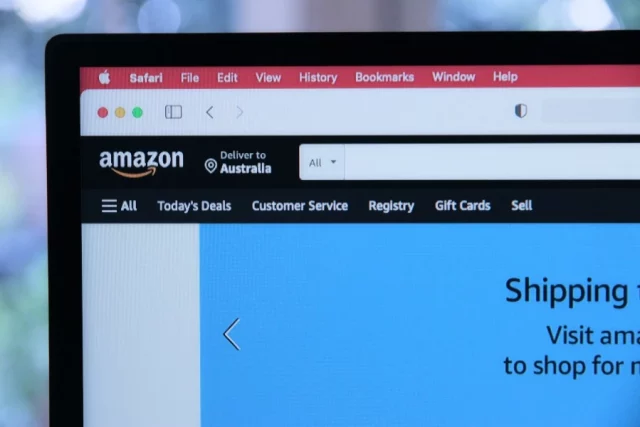When discussing digital marketplaces, Amazon has a commanding presence. With over 300 million active users, a staggering 197 million users monthly, and a global reach, companies are drawn to this platform to sell their items.
However, huge opportunities can come with substantially greater risks, and preserving your brand on Amazon is more important than ever. According to a report by Amazon in 2020, about $700 million was spent, and it employed over 10,000 people just to protect its store from fraud and abuse.
Despite all the efforts of Amazon to protect its stores from fraudsters, about a $ billion budget deficit has been reported due to counterfeit products purchased from fake accounts using the names of sellers’ brands.
Not only does this impact your bottom line, but reputations may suffer or vanish completely when consumers lose faith in authentic purchasing experiences. Here we’ll examine why brand protection matters and discuss some of the Amazon brand protection measures we should know.
5 Reasons To Protect Your Brand On Amazon
Amazon has done a great job of helping people become third-party marketplace sellers and make some extra cash. This has led to a huge influx of new businesses, making it more difficult to keep an eye on your brand’s presence in the market.
Here are five reasons why protecting your Amazon brand is so important:
1. Preserve Brand Reputation
Maintaining a solid brand reputation on Amazon is essential, as it’s often the first thing potential customers will see when researching products. Your reputation directly reflects other consumers’ trust in your product or business.
Suppose a customer reads a negative review about your brand. In that case, it could turn them off from purchasing altogether, and one bad review can easily snowball into detrimentally affecting your sales and perception if not addressed quickly.
Protecting your brand’s reputation on Amazon requires continuous upkeep and monitoring, such as engaging with customer feedback and reviews to ensure customers receive top-level products and services. When signs of negativity arise, it’s important to address these issues quickly and efficiently to protect long-term success both online and offline.
2. Protect Intellectual Property Rights
Poorly managed IP can lead to lost revenue and reputation damage due to counterfeiting and other fraudulent activity. Establishing an IP protection plan early on helps protect your products through the Amazon Brand Registry and other legal measures like trademark protection.
Be sure to register your trademark with the USPTO or an international equivalent, depending on where you’re selling, so it can’t be used by others or infringed upon. You should also actively monitor for misuse or counterfeiting and take action when necessary.
3. Ensure Quality Control
As a seller, you must ensure that your goods meet certain requirements because any deviations could have detrimental effects. Counterfeit products on Amazon can significantly impact quality control and harm your business in numerous ways.
For instance, counterfeit products may meet different quality standards than your authentic products. Customers may receive defective or dangerous items, leading to negative reviews, returns, and legal issues.
Therefore, all available measures should be implemented to ascertain that your products meet the high-quality standards that meet your customer’s demand and safeguard yourself from any potential legal repercussions by protecting your brand on Amazon.
4. Protect Revenue
Revenue is an inherently important aspect of the success and stability of a business. Without a steady source of income or sales, businesses can quickly fall into financial turmoil. Therefore, protecting your revenue when selling on Amazon makes perfect sense, as the platform can be crowded and competitive, affecting sellers’ profits.
Anyone can cannibalize or divert sales from your primary listing without taking the necessary steps to protect your revenue and brand on Amazon. From copycat listings to IP infringements, having a strategy in place for protection will save time and money and prevent you from becoming a victim of malicious behavior from competitors or hackers.
5. ASIN Hijackers
If you’ve ever sold on Amazon, you’ll know what ASINs are and why they’re so important. ASIN stands for Amazon Standard Identification Numbers, essentially serving as an item’s unique identifier on the Amazon platform.
Not only does ASIN provide listed products with their unique place in the massive Amazon catalog, but it is also imperative to prevent duplication of items. Unfortunately, having this information makes it ripe pickings for hijackers and scammers that can take advantage of unsuspecting companies by selling the same products—sometimes at a lower price.
To avoid becoming one of these companies, it’s imperative that you protect your brand with Amazon brand protection services to make sure nobody has taken advantage of your brand yet and vigilantly monitor your ASINs to ensure that no intruder will ever take advantage of your listings. Fire up those seller alerts and take proactive measures like using codes or authentication seals to protect your products from hijackers.
Amazon Brand Protection Programs You Should Know
If you’re an Amazon seller or plan to start selling on the platform soon, you must know about their brand protection programs. These programs protect your brand and the brands of others from infringement, counterfeiting, and unauthorized reselling, ultimately ensuring that consumers have access to quality products.
Amazon has many brand protection options depending on your needs, including.
- Brand Registry
- Transparency
- Project Zero
- Seller Central Account Management
- Brand Gating
These programs can all help safeguard your customers and your own business. Knowing all these available tools ensures that you – and the customers you serve – get the real deal when they shop on Amazon.
Furthermore, in 2021, Amazon carried out its first protective report to eradicate counterfeits from their stores and make them accountable for any losses they caused.
Bottomline
When protecting your brand on Amazon, there is no one-size-fits-all approach. You need to take the necessary steps to protect your IP rights, maintain quality control standards and preserve a solid reputation for customers.
Additionally, you must keep an eye out for ASIN hijackers and make use of various protection programs offered by Amazon, such as Brand Registry, Transparency Project Zero, and more, to ensure that your products are safe from any malicious activities or counterfeiting so that consumers can have access to only authentic items.
These tips and tricks up your sleeve, along with some good old-fashioned vigilance and monitoring efforts, will help you safeguard yourself while selling on the platform.














